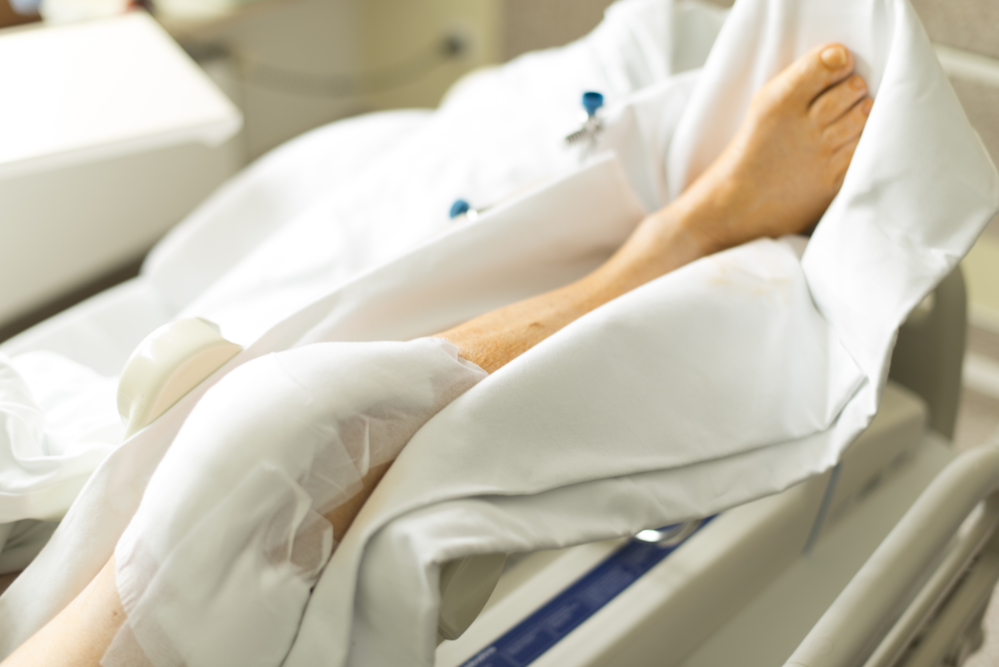“The marks humans leave are too often scars.” ― John Green, The Fault in Our Stars
 We live in a world of technological miracles, it seems. The vast amount of knowledge and the incredible capabilities of our medical realm is stunning. Especially compared to what we knew and what we could do a mere 50 or 70 years ago. But some things never change. And the human body is one of those things.
We live in a world of technological miracles, it seems. The vast amount of knowledge and the incredible capabilities of our medical realm is stunning. Especially compared to what we knew and what we could do a mere 50 or 70 years ago. But some things never change. And the human body is one of those things.
The medical technology available to us today is incredible, and the improvements of surgical techniques are impressive, but invasive procedures into the human body still have downsides. While there have been incredible strides in minimizing the extent of it, any cutting and invasion of the tissues and organs leaves scars and creates other potential problems.
For many people, the prospect of facing arthroscopic surgery is a common reality. Torn rotator cuffs, bursitis, and torn ligaments are often repaired with this procedure. Before the 1960s, however, these types of surgical repairs involved far more extensive and invasive steps.
Thankfully, in the early 1960, Japanese physician Masaki Watanabe invented the arthroscope, which was refined and adapted for surgical use. According to Medicinenet.com,
“An arthroscope can be used not only for diagnostic procedures but a wide range of surgical repairs, such as debridement, or cleaning, of a joint to remove bits of torn cartilage, ligament reconstruction, and synovectomy (removal of the joint lining). All are done without a major, invasive operation, and, since arthroscopy requires only tiny incisions, many procedures can be done on an outpatient basis with local anesthetic.”
Recovery time varies, depending on the type and extent of the surgery, but most patients can function normally again within a week or so of their procedure. While the pain and discomfort of the initial injury or condition may be fully alleviated, there is a real possibility that residual pain from the procedure may linger for months and, in some cases, even year.
The potential complications of arthroscopy, while rare, do include bleeding into the joint or infection of the joint, as well as side effects from anesthesia. Not to mention the external and internal tissue scarring that inevitably results.
A similar example is cholecystectomy, or gall bladder removal, that is currently performed using laparoscopic procedures. Before the mid-1990s this was an invasive, while relatively safe operation. The website at Columbiasurgery.org notes that,
“…in 1985, the modern era of cholecystectomy began when German surgeon Erich Mühe removed a patient’s gall bladder using laparoscopic instruments. A French gynecologic surgeon performed a laparoscopic gall bladder removal in 1987. In just two years, demand for the laparoscopic approach transformed surgical practice in the United States, and the benefits of the laparoscopic approach were ultimately codified in the new National Institutes of Health (NIH) guidelines in 1992.”
Yet, according to the Mayo Clinic, a cholecystectomy still carries a possible risk of complications including:
- Bile leak
- Bleeding
- Blood clots
- Heart problems
- Infection
- Injury to nearby structures, such as the bile duct, liver and small intestine
- Pancreatitis
- Pneumonia
Cutting Always Leaves Scars
Scarring can occur on your skin’s surface, of course, and through various layers of tissue. What you cannot see is any scarring that occurs internally from surgical procedures done. Most of us only think of the visible scars and their appearance, or the pain and discomfort often associated with them.
Verywellhealth.com notes that,
“Making an incision in the skin, which typically requires cutting through all of the layers of the skin, can result in scarring, regardless of where on the body surgery is performed or why the surgery is being done. Of course, surgery performed by a less skilled surgeon may result in a greater degree of scarring, but many times the skill of the surgeon has no effect on the amount of scarring that takes place.”
There are many times when the only lasting solution to a chronic pain issue may be surgery of some kind. And, thankfully, modern surgical procedures are refined to the point that damage to the body is minimized. But no amount of skill and technology can eliminate all the damage. And, sometimes, other procedures or approaches to treating the causes of chronic pain can be employed.
Using a Manual Therapy Approach to Pain Relief
At Pain & Performance Solutions, we address chronic pain issues by discovering the root cause and applying an appropriate technique or therapy to alleviate and often eliminate the pain. We can use a variety of therapies, and each of these techniques provides a different perspective on pain and a different method for treatment.
For example, Active Release Technique® is considered the “gold standard” for muscle treatment, while Neurokinetic Therapy® is best when a muscle is neurologically underactive or imbalanced. All of these techniques involve some form of manual therapy, or manipulation, that ultimately results in pain relief.
At the start of each session, it is vital to establish a history of the patient. We ask a series of questions regarding any surgeries, accidents, broken bones, or other physical trauma the patient may have experienced. We also ask about involvement in any sports, as well as the type of jobs worked.
After the investigative process is completed, this is followed by a series of assessments to determine the patient’s range of motion or other muscle tests depending on the area in question. After these assessments, we begin to apply palpation, or touch, to literally feel the major muscle groups of the body in order to ascertain which muscles are hypertonic, or tight, and which are hypotonic, or more normal. By creating a mental map of which structures are tight, we can then develop a likely theory for what is causing the pain or discomfort.
We then apply a series of challenges to test that theory. If the theory passes the scrutiny of testing, we can then proceed with a treatment that typically involves a structure that is excessively tight using Active Release Technique ® and often followed by reinforcement of a new movement pattern using Neurokinetic Therapy® so the problem doesn’t return.
The bottom line is that, while surgery may sometimes be necessary, treating chronic pain causes without surgery is often far more beneficial. And, even when surgery is done, the resulting pain and discomfort from scarring can often be treated with manual therapy techniques, as well.
Chronic Pain Relief and Pain and Performance Solutions
When you come to your first appointment, we want to learn about your present discomfort as well as any history of discomfort. Getting neck pain relief with ART begins once we understand where and how your pain started.
A full examination will help us determine which form of treatment is best suited to get you on your road to recovery. Your trust in us is key, as is your honesty. Ultimately, getting your body healthy and working properly is the only way to achieve total recovery. So, don’t hesitate to reach out. We are here to help and will answer any questions that you may have.
Our goal is to work through the sequence of pain and dysfunction in order to get your body healthy and working properly and to achieve total recovery. Don’t hesitate to reach out. We are here to help and will answer any questions that you may have. You can reach us at (707) 636-4404 or by filling out our online contact form.
Frequently Asked Questions
1. What are the downsides of invasive surgeries for chronic pain treatment?
Invasive surgeries, while often necessary, can leave behind internal and external scars, prolong recovery time, and increase the risk of complications like infections, bleeding, and anesthesia side effects. For example, arthroscopic and laparoscopic procedures minimize tissue damage but still result in scarring. Alternatives like manual therapy can address chronic pain without these risks, offering a less invasive path to recovery.
2. Can manual therapy effectively treat chronic pain without surgery?
Yes, manual therapy often provides effective relief for chronic pain by targeting its root cause. Techniques like Active Release Technique® (ART) and Neurokinetic Therapy® (NKT) help release tight muscles, improve mobility, and correct imbalances. These methods treat pain naturally, making surgery unnecessary for many patients while minimizing long-term side effects.
3. How does scarring from surgery impact long-term recovery?
Scarring, both internal and external, can affect recovery by causing stiffness, discomfort, or limited mobility. Even small incisions from laparoscopic surgeries can leave behind scar tissue. This tissue can sometimes lead to chronic pain, making post-surgery manual therapy a vital step to restore normal function and relieve lingering discomfort.
4. What is arthroscopy, and how does it compare to traditional surgery?
Arthroscopy is a minimally invasive surgical technique using a small camera and instruments to diagnose and treat joint issues. Compared to traditional open surgery, it requires smaller incisions, results in less scarring, and has faster recovery times. However, it still carries risks like infections or joint stiffness, which alternative therapies can help manage post-surgery.
5. What conditions can manual therapy address that surgery might not?
Manual therapy is highly effective for conditions like muscle imbalances, chronic tension, or poor posture that surgery cannot resolve. For example, ART is excellent for addressing soft tissue restrictions, while NKT helps retrain muscles to function properly. These approaches often lead to lasting pain relief without surgical intervention.
6. How does laparoscopic surgery reduce recovery time compared to open surgery?
Laparoscopic surgery involves smaller incisions, less bleeding, and reduced trauma to surrounding tissues, which significantly shortens recovery time. For instance, gallbladder removal through laparoscopic methods allows patients to return to daily activities within days, compared to weeks for traditional surgery. However, scar tissue and lingering pain may still require additional therapies like manual manipulation.
7. Why is understanding a patient’s history important in chronic pain treatment?
Understanding a patient’s history helps identify the root cause of chronic pain. Information about past surgeries, injuries, or repetitive motions enables therapists to create personalized treatment plans. For example, someone with a torn rotator cuff might benefit from ART combined with corrective exercises to prevent further injury and promote healing.
8. What are the risks of gallbladder removal surgery, and can they be minimized?
Gallbladder removal, even with laparoscopic techniques, carries risks like bile leaks, blood clots, or damage to nearby organs. Choosing an experienced surgeon can reduce these risks. Additionally, addressing related pain or complications post-surgery with manual therapy can help improve outcomes and long-term recovery.
9. How can manual therapy complement post-surgery recovery?
Manual therapy helps relieve pain, reduce scar tissue, and restore mobility after surgery. Techniques like ART can target tight muscles and alleviate discomfort caused by surgical scars. For instance, a patient recovering from knee arthroscopy may regain full motion faster with manual therapy than with standard rehabilitation alone.
10. Is surgery always the best option for chronic pain management?
Not always. While surgery can be necessary for severe conditions, non-invasive approaches like manual therapy often provide effective pain relief without the risks of complications. Exploring options like ART and NKT first allows patients to avoid potential downsides of surgery while addressing the underlying cause of their discomfort.
